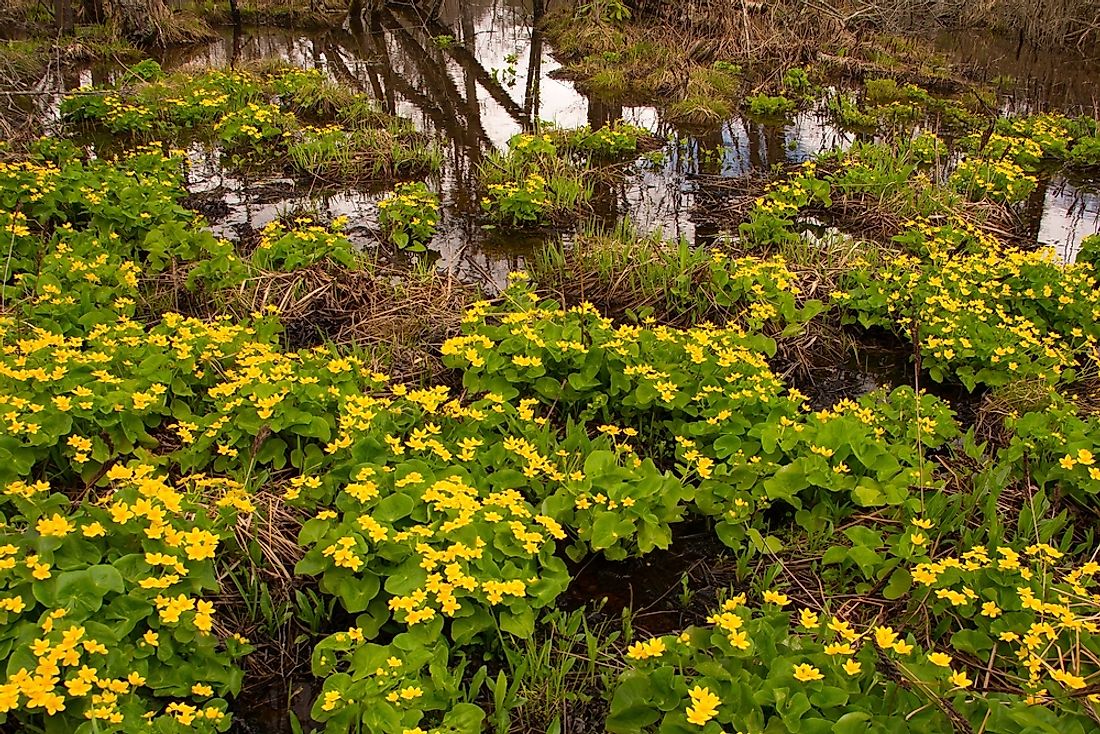What Is A Shrub Swamp?

Shrub swamp is a type of freshwater wetland ecosystem that is common in areas that are too wet to become swamps but too dry to become marshes. Simply put, shrub swamps are shrub-dominated wetlands that occur in areas that are seasonally or temporarily flooded. Shrub swamps may also be hydrated by seasonal streams or flooding caused by tidal cycle. The vegetation of the shrub swamps may be forested or scrub-shrub and may be composed of over 50% shrub cover and about 20% trees. Shrub swamp is often created by a catastrophic event such as flooding, fire, or cutting of trees in a forested swamp. The swamps may also be formed as a result of the draining of meadows and fens.
Development of a Shrub Swamp
Swamps are common throughout the world, especially in low lying regions with poor drainage. Some swamps may form from marshes that gradually fill in, allowing shrubs and trees to grow in. Meadows are important in the development of shrub swamps. As wet meadows mature, they begin to be filled with vegetation. The soil also begins to decompose, creating a hummock above the water surface. Eventually, some small plants and shrubs begin to grow on the hummocks. Shrub swamp water is drawn from surface runoffs, stream, or rivers, with the water flowing in and out of the swamp throughout the year. Consequently, shrub swamps are likely to be drier than the wet meadows and allow water intolerant plants to grow on the hummocks.
Types of Shrub Swamps
There are two types of shrub swamp, namely palustrine and circumneutral swamps.
Palustrine swamps are common at an elevation that is high enough to support woody plants but too low and rarely submerged to support large trees. They often form an almost impenetrable thicket. The dominant species of shrub in the palustrine swamp is the Sitka willow.
Circumneutral shrub swamp occurs in a variety of settings including the upland edge of marshes and stream floodplains. They are seasonally flooded and may remain saturated for much of the growing season. The plant community is characterized by tall shrubs including species such as smooth alder, speckled alder, and water willow.
Habitat Value of Shrub Swamps
Several shrub swamps are characterized by high-quality vernal-pool habitats. The long hydroperiods are conducive for the development of amphibian larvae and the diverse vegetation provide a perfect environment for the survival of several species. The larvae of several rare and common moth species feed on different shrub species and other herbaceous plants in the swamp. Migratory birds also use shrub thickets as nesting habitat as well as hunting grounds for small amphibians. During winter, when the shrub swamps have frozen surface, browsers such as New England cottontail have easy access to the shrubs.
Threats and Management Needs
The major threats to shrub swamps include the invasive species and rehabilitation of swamps for commercial purposes. Some of the common invasive species are reed canary grass, common buckthorn, and purple loosestrife. Therefore, control of invasive species is a major means of maintaining a shrub swamp. Since most shrub swamps are successional, they require regular disturbance to be maintained in place.











